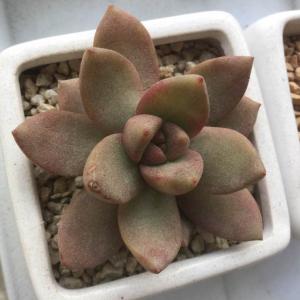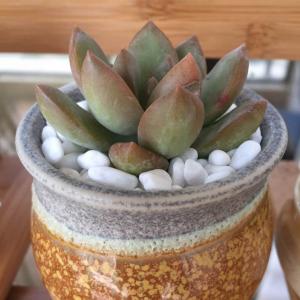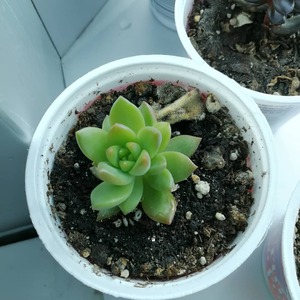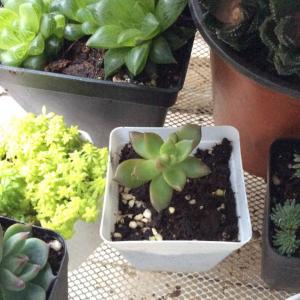动态 (221)
格桑花
2024年01月22日

Introduction:
In a world that often emphasizes external validation and perfection, cultivating a positive mindset and embracing self-love and acceptance is crucial for personal well-being and happiness. A positive mindset allows individuals to approach life with optimism, resilience, and a belief in their own abilities. Self-love and acceptance involve recognizing and embracing one's worth, flaws, and uniqueness. In this article, we will explore six key points to consider when it comes to cultivating a positive mindset and embracing self-love and acceptance.Practice Self-Compassion:
Self-compassion is about treating yourself with kindness, understanding, and acceptance, especially during challenging times or setbacks. It involves acknowledging that everyone makes mistakes and faces difficulties, and that it is okay to be imperfect. To practice self-compassion, start by paying attention to the way you talk to yourself. Replace harsh self-criticism with words of kindness and understanding. Treat yourself as you would treat a friend who is going through a tough time. Offer comfort and reassurance when you make mistakes or face failures. By practicing self-compassion, you create a nurturing environment for personal growth and self-acceptance.Focus on Gratitude:
Gratitude is a powerful tool for cultivating a positive mindset and shifting your focus towards the positives in life. Regularly taking the time to acknowledge and appreciate the things you are grateful for can help shift your mindset from one of lack or negativity to one of abundance and positivity. Start a gratitude journal and jot down a few things you are grateful for each day. Reflect on the moments, experiences, and relationships that bring you joy and fulfillment. This practice can help you develop a more positive outlook and foster self-love by recognizing the good in yourself and your life.Challenge Negative Thoughts:
Negative thoughts and self-doubt can hinder self-love and acceptance. It is crucial to challenge and reframe these negative thoughts to cultivate a positive mindset. Whenever you catch yourself thinking negatively, pause and question the validity of those thoughts. Are they based on facts or just assumptions? Replace negative thoughts with positive affirmations and beliefs about yourself. For example, if you find yourself thinking, "I'm not good enough," reframe it to, "I am deserving of love and acceptance just as I am." By consciously challenging negative thoughts, you can cultivate a more positive mindset and embrace self-love.Practice Self-Care:
Self-care is an essential aspect of nurturing self-love and acceptance. It involves engaging in activities that promote physical, mental, and emotional well-being. Make time for activities that bring you joy, relaxation, and rejuvenation. This can include hobbies, exercise, spending time in nature, practicing mindfulness or meditation, or engaging in creative outlets. Prioritizing self-care sends a message to yourself that you are worthy of love and attention. It allows you to recharge and replenish your energy, which is essential for maintaining a positive mindset and embracing self-love and acceptance.Surround Yourself with Positive Influences:
The people and environment we surround ourselves with can greatly impact our mindset and self-perception. Surround yourself with positive influences, such as supportive friends, mentors, or role models who uplift and inspire you. Seek out relationships that encourage and support your growth and well-being. Limit exposure to negative influences, whether it be toxic relationships, media that promotes unrealistic standards, or social media that triggers comparison. Surrounding yourself with positivity and supportive influences can reinforce self-love and acceptance by nurturing an environment that fosters personal growth and positivity.Embrace Self-Growth and Learning:
Embracing self-love and acceptance does not mean stagnation or complacency. It involves a willingness to grow, learn, and evolve as an individual. Embrace personal growth by setting realistic goals, learning new skills, and stepping out of your comfort zone. Celebrate your achievements and acknowledge your progress along the way. Embracing self-growth and learning fosters a sense of self-empowerment and reinforces self-love and acceptance. When you actively pursue personal growth, you demonstrate your belief in your own potential and worth. Embracing self-growth and learning opens doors to new opportunities, enhances your self-confidence, and deepens your love and acceptance for yourself.Conclusion:
Cultivating a positive mindset and embracing self-love and acceptance are essential for personal well-being and happiness. By practicing self-compassion, focusing on gratitude, challenging negative thoughts, practicing self-care, surrounding yourself with positive influences, and embracing self-growth, you can foster a positive mindset and deepen your love and acceptance for yourself. Remember that self-love and acceptance are ongoing journeys that require patience, practice, and self-reflection. By embracing these principles, you can cultivate a strong foundation of self-worth and resilience that will positively impact all areas of your life. Embrace the journey of self-love and acceptance and watch as it transforms your relationship with yourself and the world around you.
文章
格桑花
2024年01月21日

Introduction:
Effective communication is the foundation of a healthy and thriving relationship. It allows individuals to express their needs, desires, and concerns, fostering understanding, empathy, and connection. However, conflicts are inevitable in any relationship, and how they are resolved can either strengthen or weaken the bond between individuals. In this article, we will explore six key points to consider when it comes to nurturing healthy communication and resolving conflicts in relationships.Active Listening and Empathy:
Active listening is a fundamental aspect of healthy communication. It involves fully engaging with the speaker, being present in the moment, and genuinely seeking to understand their perspective. Practice active listening by maintaining eye contact, nodding to show understanding, and paraphrasing to ensure comprehension. Additionally, cultivate empathy by putting yourself in the other person's shoes and genuinely trying to understand their feelings and experiences. By actively listening and showing empathy, you create a safe space for open and honest communication, fostering a deeper connection.Use "I" Statements and Express Emotions:
When expressing concerns or addressing conflicts, it is important to use "I" statements rather than "you" statements. "I" statements focus on your own feelings and experiences, reducing the chances of sounding accusatory or confrontational. For example, instead of saying "You never listen to me," try saying "I feel unheard when I don't feel listened to." This approach promotes understanding and opens up a constructive dialogue. Additionally, express emotions openly and honestly, using "I" statements to communicate how you feel. By expressing emotions in a respectful manner, you create an atmosphere of emotional safety and vulnerability.Practice Non-Defensive Communication:
During conflicts, it is common for individuals to become defensive and engage in counterproductive behaviors such as blaming, criticizing, or shutting down. To resolve conflicts effectively, practice non-defensive communication. This involves staying calm, actively listening to the other person's perspective, and responding in a non-accusatory manner. Avoid becoming defensive or dismissive of the other person's feelings or concerns. Instead, focus on understanding their point of view and finding common ground. By practicing non-defensive communication, conflicts can be approached with empathy and understanding, leading to meaningful resolutions.Seek Compromise and Collaborative Solutions:
Conflict resolution in relationships should aim for compromise and collaborative solutions. Instead of approaching conflicts as win-lose situations, strive for a win-win outcome where both individuals are satisfied with the resolution. This requires a willingness to find common ground, explore different perspectives, and be open to creative solutions. Seek to understand each other's needs and find compromises that address those needs. Collaborative problem-solving promotes a sense of equality and cooperation in the relationship, strengthening the bond between individuals.Take Time-outs and Practice Self-Reflection:
During heated arguments or conflicts, it can be beneficial to take time-outs to cool down and regain composure. When emotions are running high, it becomes challenging to communicate effectively. Communicate your need for a break and agree on a specific time to reconvene and continue the discussion. Use this time to practice self-reflection and gain clarity on your own thoughts, emotions, and needs. Consider how your own actions or words may have contributed to the conflict. This self-reflection allows for a more constructive and empathetic approach when resolving the conflict.Seek Professional Help When Needed:
In some cases, conflicts in relationships may become complex and challenging to resolve without professional intervention. If conflicts persist, communication becomes toxic, or the relationship is significantly strained, seeking the help of a therapist or relationship counselor can be beneficial. A trained professional can provide guidance, facilitate healthy communication, and help individuals navigate through conflicts. Seeking professional help is not a sign of weakness but rather a proactive step towards nurturing a healthier and happier relationship.Conclusion:
Nurturing healthy communication and resolving conflicts in relationships is essential for fostering a strong and fulfilling connection. By practicing active listening, using "I" statements, expressing emotions, practicing non-defensive communication, seeking compromise, and taking time-outs for self-reflection, individuals can effectively address conflicts and strengthen their relationship. Remember that conflicts are an inherent part of any relationship, but how they are approached and resolved determines the long-term health and happiness of the relationship. By prioritizing open and honest communication, empathy, and mutual respect, individuals can build a solid foundation for a thriving and fulfilling partnership.
文章
格桑花
2024年01月20日

Understanding Essential Oils
Essential oils represent the concentrated essences distilled from different parts of plants, encompassing leaves, flowers, stems, and roots. Within these oils lies the captured essence of nature's aromas and therapeutic capabilities, waiting to be unlocked.How Essential Oils Work
Essential oils employ several intricate mechanisms to interact with your body. Inhalation or topical application facilitates these oils' engagement with your senses and physique. Their aromatic molecules stimulate the olfactory system, capable of influencing emotions and mood. When applied to the skin, essential oils can affect physical health directly.Choosing Quality Essential Oils
The paramount importance of selecting premium, pure essential oils cannot be overstated. Seek out oils proudly labeled as 100% pure and therapeutic grade. Vigilance is required to differentiate them from synthetic fragrances, which lack the authentic therapeutic essence essential oils offer.Benefits of Aromatherapy
Stress Reduction and Relaxation
Certain essential oils, such as the ever-so-soothing lavender and the gentle embrace of chamomile, are renowned for their remarkable calming attributes. Inhaling the delicate wafts of these oils, or diffusing them into your environment, becomes a pathway to stress reduction and a serene, harmonious mindset at the end of a taxing day.Improved Sleep Quality
The realm of aromatherapy extends a helping hand toward achieving superior sleep quality. The embrace of essential oils like lavender and the steadfast cedarwood can permeate your sleeping quarters. These oils actively promote an undisturbed, restorative night's slumber, reinvigorating you for the day ahead.Elevated Mood and Energy
The zesty essence of citrus oils, embodied in the zest of lemon or the cheerfulness of orange, can lift your spirits and infuse you with newfound vitality. Inhaling these rejuvenating fragrances acts as a natural energy booster, the perfect antidote for those moments of weariness or low spirits.Pain Relief and Muscle Relaxation
Peppermint and eucalyptus, among others, stand as essential oils with potent analgesic properties. They come to your aid, offering respite from headaches, muscle discomfort, and joint pain. Dilute these oils and apply them topically for targeted relief, paving the way for enhanced well-being.Ways to Incorporate Aromatherapy
Diffusers
A diffuser emerges as a popular conduit for indulging in the therapeutic world of aromatherapy. These devices artfully disperse the precious molecules of essential oils into the air, suffusing your surroundings with delightful scents and their accompanying therapeutic attributes.Topical Application
Topical application, featuring the dilution of essential oils with carrier oils such as jojoba or coconut oil, opens up the avenue for direct absorption through the skin. This method not only ensures the oils' close interaction with your body but also facilitates localized relief for specific concerns.Aromatherapy Baths
Elevate your bath-time ritual by adding a few drops of essential oils to your bathwater. This simple yet indulgent act creates a sensory-rich and therapeutic bathing experience. Enhance the effect by incorporating Epsom salts, amplifying the holistic benefits of your aromatic soak.Inhalation
Harness the potency of essential oils through inhalation, whether via a steam inhalation method or simply by inhaling the fragrant essence from the bottle. This direct approach promises rapid relief and an immediate mood uplift, making it a valuable tool in your daily life.Conclusion
Aromatherapy unfolds as a holistic approach to enhancing both physical and emotional well-being. By seamlessly integrating high-quality essential oils into your daily life, whether through diffusers, topical applications, luxurious baths, or invigorating inhalations, you unlock the diverse spectrum of aromatherapy's benefits. It becomes your gateway to a more fulfilling and health-conscious life, where every day holds the promise of heightened well-being.
文章
格桑花
2024年01月19日

Introduction to Holistic Well-Being
Building a Foundation for Long-Term Health and Wellness
Wellness is more than just the absence of illness; it encompasses a holistic approach to living a fulfilling and healthy life. This article explores the essential components of creating a wellness routine that promotes long-term well-being, covering physical, mental, and emotional aspects.Physical Well-Being: Nourishing Your Body
1. Balanced Nutrition for Vitality
Prioritize balanced nutrition to nourish your body. Include a variety of fruits, vegetables, whole grains, lean proteins, and healthy fats in your diet. Pay attention to portion sizes and stay hydrated for optimal physical well-being.2. Regular Exercise for Strength and Flexibility
Incorporate regular exercise into your routine for both strength and flexibility. Engage in a mix of cardiovascular activities, strength training, and flexibility exercises. Find activities you enjoy to make exercise a sustainable part of your lifestyle.3. Quality Sleep for Restoration
Prioritize quality sleep for physical and mental restoration. Aim for 7-9 hours of restful sleep each night. Establish a consistent sleep schedule, create a conducive sleep environment, and practice relaxation techniques for improved sleep quality.Mental and Emotional Well-Being: Cultivating Resilience
1. Stress Management and Relaxation Techniques
Incorporate stress management techniques into your routine. Practice mindfulness, meditation, deep breathing, or yoga to reduce stress levels. Create moments of calm and relaxation amidst the demands of daily life.2. Prioritizing Mental Health Check-Ins
Prioritize mental health check-ins as part of your routine. Regularly assess your emotional well-being, seeking support or professional help when needed. Establish healthy boundaries and engage in activities that bring joy and fulfillment.3. Continuous Learning and Mental Stimulation
Cultivate a habit of continuous learning to keep your mind stimulated. Read books, explore new subjects, or engage in creative activities. Lifelong learning contributes to cognitive vitality and a sense of purpose.Social Well-Being: Fostering Connections
1. Nurturing Social Connections
Nurture social connections with friends, family, and the community. Foster meaningful relationships, engage in social activities, and prioritize quality time with loved ones. Social connections are vital for emotional well-being.2. Establishing Healthy Communication
Practice healthy communication in your relationships. Foster open and honest communication, listen actively, and express your thoughts and feelings constructively. Effective communication strengthens connections and promotes understanding.3. Giving Back Through Acts of Kindness
Incorporate acts of kindness into your routine. Whether through volunteering, helping others, or simply expressing gratitude, contributing positively to the well-being of others enhances your sense of purpose and social connection.Conclusion: Embracing a Lifelong Wellness Journey
May Your Wellness Routine Be a Source of Joy
As you embark on the journey of creating a wellness routine for long-term health, may it be a source of joy, balance, and fulfillment. Embrace the interconnected aspects of physical, mental, and social well-being to foster a holistic approach to your health journey.
文章
格桑花
2024年01月18日

Introduction to Joyful Living
Exploring the Vital Role of Laughter and Play in Well-Being
Laughter and play are integral aspects of the human experience that contribute significantly to overall well-being. This article delves into the importance of incorporating laughter and play into our lives, highlighting their positive impact on physical, mental, and emotional health.The Physical Benefits of Laughter
1. Stress Reduction and Relaxation
Laughter triggers the release of endorphins, the body's natural feel-good chemicals. These endorphins promote an overall sense of well-being and can temporarily relieve pain. Additionally, laughter reduces the level of stress hormones, fostering relaxation.2. Boosted Immune System
The act of laughing positively influences the immune system. It increases the production of immune cells and antibodies, enhancing the body's ability to defend against infections. A hearty laugh can serve as a natural immune booster.3. Improved Cardiovascular Health
Laughter has cardiovascular benefits. It improves blood flow, promotes better circulation, and may contribute to a healthier heart. Engaging in laughter-inducing activities is a fun way to support cardiovascular health.The Mental and Emotional Aspects of Play
1. Enhanced Mood and Emotional Resilience
Play, whether through games, hobbies, or creative activities, contributes to enhanced mood and emotional resilience. Engaging in enjoyable activities releases neurotransmitters like dopamine and serotonin, which promote feelings of happiness and contentment.2. Stress Relief and Cognitive Renewal
Play acts as a form of stress relief and cognitive renewal. Taking a break for playful activities allows the mind to relax and recharge, fostering a positive mental state and improved problem-solving abilities.3. Strengthened Social Bonds
Play often involves social interaction, strengthening interpersonal connections. Whether playing games with friends, participating in group activities, or sharing laughter, these experiences contribute to a sense of community and belonging.Incorporating Laughter and Play into Daily Life
1. Cultivate a Playful Mindset
Approach life with a playful mindset. Embrace the joy of discovery, curiosity, and creativity. Allow yourself to engage in activities that bring a sense of playfulness to your day.2. Share Laughter with Others
Share laughter with others. Spend time with friends and loved ones who bring joy and humor into your life. Attend comedy shows, watch funny movies, or enjoy activities that elicit laughter together.3. Make Time for Playful Activities
Allocate time for playful activities. Whether it's playing games, pursuing hobbies, or engaging in recreational sports, prioritize activities that bring joy and play into your routine.Conclusion: Embracing the Lightness of Being
May Laughter and Play Enrich Your Journey
As you embrace the importance of laughter and play in your life, may the lightness of being accompany you on your journey. Incorporate moments of joy, engage in playful activities, and let the positive effects radiate through your physical, mental, and emotional well-being.
文章
格桑花
2024年01月17日

Introduction to Spiritual Connection
Embarking on a Journey of Self-Discovery and Spiritual Connection
Spirituality is a deeply personal and transformative journey that can bring meaning, purpose, and inner peace. This article explores the various facets of connecting with your spirituality, offering insights and practices to guide you on this profound exploration.Understanding Spirituality
Defining Spirituality and its Personal Nature
Spirituality is a unique and personal aspect of the human experience. It encompasses a sense of connection to something greater than oneself, whether that be a higher power, the universe, or a deeper inner wisdom. It goes beyond religious affiliations and delves into the core of personal beliefs and values.Exploring Different Spiritual Paths
There are countless spiritual paths, each offering its own perspective and practices. Whether rooted in organized religion, nature-based spirituality, or individual exploration, finding a path that resonates with your beliefs and values is a key step in the journey.Practical Approaches to Spiritual Connection
1. Meditation for Inner Exploration
Meditation is a powerful tool for inner exploration and spiritual connection. Whether through mindfulness meditation, guided visualization, or transcendental meditation, the practice helps quiet the mind, foster self-awareness, and open the door to deeper spiritual insights.2. Reflective Journaling for Self-Discovery
Keeping a reflective journal allows you to explore your thoughts, feelings, and spiritual experiences. Write about moments of awe, gratitude, and introspection. Journaling can serve as a valuable tool for tracking your spiritual journey and gaining insights into your beliefs.3. Nature as a Spiritual Teacher
Connecting with nature is a profound way to nurture your spirituality. Spend time outdoors, whether in serene landscapes or your local park. Nature has a way of grounding individuals, fostering a sense of awe, and providing a space for reflection and connection.Nurturing Spiritual Values in Daily Life
1. Cultivating Compassion and Empathy
Spirituality often involves cultivating values such as compassion and empathy. Practice kindness towards yourself and others. Engage in acts of service and find ways to contribute positively to the well-being of those around you.2. Mindful Awareness in Everyday Activities
Bring mindful awareness to your everyday activities. Whether eating, walking, or working, be fully present in the moment. Mindfulness enhances your connection to the present and fosters a deeper understanding of your spiritual self.3. Building a Supportive Spiritual Community
Joining or creating a supportive spiritual community can provide a sense of belonging and shared growth. Engage in discussions, attend spiritual gatherings, and connect with like-minded individuals who can offer support and inspiration.Conclusion: Embracing Your Spiritual Journey
May Your Spiritual Path Bring Fulfillment and Wisdom
As you embark on your spiritual journey, may it be a source of fulfillment, wisdom, and profound connection. Embrace the diversity of spiritual experiences, trust in your inner guidance, and allow your spirituality to be a beacon of light on your life's path.
文章
格桑花
2024年01月16日

Introduction to Nature's Healing Powers
Exploring the Profound Benefits of Connecting with Nature
Nature has a unique ability to rejuvenate, inspire, and heal. This article delves into the myriad benefits of spending time in nature, highlighting the positive impact it can have on physical, mental, and emotional well-being.Physical Health Benefits
1. Enhanced Immune Function
Spending time in nature has been linked to enhanced immune function. The fresh air, exposure to natural elements, and the presence of phytoncides in the air contribute to a strengthened immune system.2. Increased Vitamin D Absorption
Outdoor activities expose individuals to sunlight, a natural source of vitamin D. Adequate sunlight exposure supports the body's absorption of vitamin D, crucial for bone health, immune function, and overall well-being.3. Improved Cardiovascular Health
Engaging in outdoor activities, such as walking or hiking, promotes cardiovascular health. Regular nature walks have been associated with reduced blood pressure, improved circulation, and a lower risk of heart disease.Mental and Emotional Well-being
1. Stress Reduction and Relaxation
Nature has a calming effect on the mind, reducing stress and promoting relaxation. The sights and sounds of nature trigger the body's relaxation response, leading to a sense of peace and tranquility.2. Enhanced Mood and Reduced Anxiety
Spending time in natural surroundings has been linked to improved mood and reduced anxiety. The beauty of nature, combined with physical activity, releases endorphins, contributing to a more positive emotional state.3. Increased Creativity and Cognitive Function
Nature has been shown to boost creativity and cognitive function. Time in natural settings allows the brain to rest and restore, leading to improved concentration, problem-solving skills, and creative thinking.Social and Community Benefits
1. Strengthened Social Bonds
Nature provides a conducive environment for social interactions. Group activities in natural settings promote bonding, communication, and a sense of community, contributing to overall social well-being.2. Fostering Environmental Awareness
Spending time in nature fosters environmental awareness and a sense of responsibility toward the planet. Connecting with the natural world encourages individuals to appreciate and protect the environment.Practical Tips for Incorporating Nature Time
1. Schedule Regular Outdoor Activities
Make a conscious effort to schedule regular outdoor activities. Whether it's a daily nature walk, weekend hikes, or camping trips, allocate time to connect with the natural world.2. Create a Nature-Friendly Space at Home
Bring nature into your daily life by creating a nature-friendly space at home. Incorporate plants, natural light, and outdoor elements to enhance your living environment.3. Practice Mindful Nature Observation
Engage in mindful nature observation. Take moments to truly appreciate the sights, sounds, and sensations of the natural world. Mindful awareness deepens the connection with nature.Conclusion: Embracing the Healing Power of Nature
May Nature's Bounty Enrich Your Life
As you embrace the benefits of spending time in nature, may the healing power of the outdoors enrich your life. Whether it's the whispering of leaves, the warmth of sunlight, or the vastness of landscapes, may these experiences contribute to your overall well-being.
文章
格桑花
2024年01月15日

Introduction to Immune System Health
The Foundation of Wellness: Nurturing a Strong Immune System
A robust immune system is essential for overall health and well-being. This article explores the key components of immune system health and provides practical tips on how to strengthen your body's natural defenses for optimal health.Understanding the Immune System
The Role of the Immune System in Defending the Body
The immune system is a complex network of cells, tissues, and organs working together to defend the body against harmful invaders, such as bacteria, viruses, and other pathogens. Understanding its functions is the first step in supporting immune health.Key Components of the Immune System
- **White Blood Cells:** These cells, including lymphocytes and phagocytes, play a central role in identifying and eliminating pathogens. - **Antibodies:** Proteins produced by the immune system to neutralize and eliminate harmful substances. - **Lymphatic System:** A network of vessels and nodes that transport lymph throughout the body, carrying immune cells and filtering out toxins.Healthy Lifestyle Habits for Immune Support
1. Nutrient-Rich Diet for Immune Function
Maintain a nutrient-rich diet to support immune function. Include a variety of fruits, vegetables, whole grains, and lean proteins. Key nutrients such as vitamin C, vitamin D, zinc, and antioxidants contribute to immune health.2. Adequate Hydration for Immune Function
Stay adequately hydrated to support immune function. Water plays a crucial role in transporting immune cells and ensuring the proper functioning of bodily systems. Aim for at least 8 glasses of water per day.3. Regular Exercise for Immune Boost
Engage in regular exercise to boost immune function. Physical activity promotes circulation, allowing immune cells to move freely throughout the body. Aim for a mix of cardiovascular exercise, strength training, and flexibility exercises.Stress Management for Immune Resilience
1. Stress Reduction Techniques
Incorporate stress reduction techniques into your routine. Practices such as meditation, deep breathing, yoga, and mindfulness can help lower stress hormones and support immune resilience.2. Prioritizing Adequate Sleep
Prioritize adequate sleep for immune health. Quality sleep is essential for the production of immune cells and antibodies. Aim for 7-9 hours of restful sleep each night to support overall well-being.Good Hygiene Practices for Immune Defense
1. Hand Hygiene to Prevent Infections
Practice good hand hygiene to prevent infections. Wash your hands regularly with soap and water, especially before eating and after being in public spaces. Use hand sanitizer when soap and water are not available.2. Proper Vaccinations for Immune Protection
Stay up-to-date with vaccinations to ensure immune protection against preventable diseases. Consult with healthcare professionals to receive recommended vaccines based on your age, health status, and travel plans.Environmental Factors and Immune Health
1. Limiting Exposure to Environmental Toxins
Limit exposure to environmental toxins that can compromise immune health. Minimize exposure to pollutants, chemicals, and other environmental stressors that may weaken the immune system.2. Immune-Boosting Herbs and Supplements
Consider immune-boosting herbs and supplements under the guidance of a healthcare professional. Some supplements, such as echinacea, elderberry, and probiotics, may offer additional support for immune function.Conclusion: Nurturing Long-Term Immune Resilience
Embrace a Holistic Approach to Immune Health
Building a strong immune system requires a holistic approach that combines healthy lifestyle habits, stress management, and environmental awareness. By embracing these practices, you nurture long-term immune resilience and support your journey to optimal health.May Your Immune System Thrive and Your Health Flourish
Here's to a thriving immune system and flourishing health! May your commitment to immune well-being contribute to a resilient and vibrant life.
文章
格桑花
2024年01月14日

Introduction to Mindfulness and Meditation
The Path to Inner Peace: Exploring Mindfulness and Meditation
In the hustle and bustle of life, finding moments of inner peace becomes crucial. This article delves into the practices of mindfulness and meditation, guiding you on a journey toward cultivating tranquility, clarity, and a deep sense of inner peace.Understanding Mindfulness
Defining Mindfulness and its Core Principles
Mindfulness is the practice of being fully present in the current moment without judgment. It involves paying attention to your thoughts and feelings without getting overwhelmed by them. The core principles include awareness, acceptance, and staying present.Bringing Mindfulness to Daily Activities
Incorporate mindfulness into daily activities. Whether eating, walking, or working, bring your full attention to the task at hand. This simple shift in focus can transform routine activities into opportunities for mindfulness and presence.Utilizing Mindful Breathing for Grounding
Mindful breathing is a powerful technique for grounding yourself in the present moment. Take intentional breaths, focusing on the sensation of each inhale and exhale. This practice calms the mind and anchors your awareness in the now.Embarking on the Meditation Journey
Understanding Meditation and its Benefits
Meditation is a practice that involves training the mind to achieve a state of focused attention and heightened awareness. Its benefits include stress reduction, improved emotional well-being, and enhanced clarity of thought.Starting with Guided Meditations
If new to meditation, start with guided sessions. Use apps, online resources, or attend classes that provide structured guidance. Guided meditations help you navigate the practice, offering prompts for relaxation, visualization, and self-discovery.Exploring Different Meditation Techniques
Explore various meditation techniques to find what resonates with you. Mindfulness meditation, loving-kindness meditation, and transcendental meditation are just a few examples. Experimenting with different approaches allows you to discover the methods that suit your preferences.Creating a Mindful Space for Meditation
Designing a Tranquil Meditation Space
Create a dedicated space for meditation. Choose a quiet and comfortable area where you won't be easily disturbed. Personalize the space with items that evoke a sense of peace, such as cushions, candles, or meaningful symbols.Establishing Consistency in Practice
Consistency is key to the benefits of meditation. Set aside dedicated time for your practice each day. Whether it's a few minutes in the morning or before bed, regularity enhances the effectiveness of meditation in fostering inner peace.Nurturing Inner Peace in Daily Life
Bringing Mindfulness into Challenging Moments
Practice mindfulness in challenging moments. When faced with stress or difficulties, take a pause. Breathe deeply and observe your thoughts without attachment. This conscious awareness can bring a sense of calm and clarity, even in the midst of challenges.Infusing Daily Activities with Presence
Infuse your daily activities with presence. Whether eating a meal, engaging in conversation, or doing chores, be fully engaged. Mindful presence in these moments enriches your experience, fostering a deeper connection with the present.Conclusion: Embracing Inner Peace Through Mindfulness and Meditation
May Your Journey Bring Serenity and Tranquility
As you embark on the journey of mindfulness and meditation, may it lead you to a place of serenity and tranquility within. Embrace these practices with openness, and may the peace you cultivate radiate into every aspect of your life.
文章
格桑花
2024年01月13日

Introduction to Stress Management
The Importance of Cultivating a Calmer Mind through Stress Management
Stress is an inevitable part of life, but how we manage it can significantly impact our well-being. This article explores effective stress management techniques to cultivate a calmer mind, promoting resilience and a healthier approach to life's challenges.Mindfulness and Relaxation Techniques
Practicing Mindfulness Meditation
Mindfulness meditation is a powerful technique for stress management. Take time each day to engage in mindfulness practices, focusing on the present moment without judgment. This cultivates awareness, reduces stress, and enhances overall mental well-being.Deep Breathing Exercises for Instant Calm
Deep breathing exercises offer instant calm in stressful situations. Incorporate techniques like diaphragmatic breathing or box breathing to activate the body's relaxation response. These exercises are simple, yet effective tools for managing stress on the spot.Progressive Muscle Relaxation for Physical Tension
Progressive Muscle Relaxation (PMR) is a technique that involves systematically tensing and relaxing different muscle groups. This helps release physical tension associated with stress, promoting a sense of calm and relaxation throughout the body.Positive Lifestyle Habits for Stress Reduction
Regular Exercise for Stress Release
Engage in regular exercise to release built-up stress and tension. Physical activity triggers the release of endorphins, the body's natural mood lifters. Whether through brisk walks, jogging, or other forms of exercise, find activities that bring joy and relaxation.Establishing a Consistent Sleep Routine
A consistent sleep routine is crucial for stress management. Prioritize quality sleep by maintaining a regular sleep schedule, creating a comfortable sleep environment, and practicing relaxation techniques before bedtime. Quality rest enhances resilience to stress.Healthy Nutrition for Stress Resilience
Maintain a healthy and balanced diet to support stress resilience. Ensure you're getting essential nutrients through a variety of whole foods. Avoid excessive caffeine and sugar, as these can contribute to increased stress levels.Cognitive Strategies for Stress Coping
Positive Affirmations and Self-Talk
Positive affirmations and constructive self-talk can shift your mindset during stressful moments. Replace negative thoughts with positive affirmations that reinforce your capabilities and resilience. Cultivating a positive internal dialogue promotes a calmer mental state.Setting Realistic Goals and Priorities
Set realistic goals and priorities to manage stress associated with overwhelming tasks. Break larger tasks into smaller, more manageable steps. Prioritize your responsibilities and focus on what truly matters, reducing the feeling of being constantly overwhelmed.Time Management Techniques
Effective time management is a key stress management tool. Organize your tasks, set realistic deadlines, and allocate time for breaks. Implement techniques like the Pomodoro Technique or time blocking to enhance productivity while avoiding burnout.Social and Emotional Support
Connecting with Supportive Relationships
Cultivate supportive relationships to share your thoughts and feelings. Connecting with friends, family, or a support network provides emotional outlets and reinforces a sense of belonging, reducing feelings of isolation.Seeking Professional Support When Needed
When stress becomes overwhelming, seek professional support. Therapists, counselors, or support groups can offer guidance and coping strategies. Recognizing when to seek professional help is a proactive step in managing stress effectively.Conclusion: Nurturing a Calm Mind for a Balanced Life
Embrace Stress Management as a Lifelong Skill
Stress management is a lifelong skill that contributes to a balanced and fulfilling life. As you embrace these techniques, remember that cultivating a calmer mind is an ongoing practice. Approach it with patience, self-compassion, and a commitment to your well-being.May Your Mind Be Calm, Your Heart Light, and Your Days Balanced
Here's to a calm mind, a light heart, and balanced days! May your journey toward effective stress management be transformative, fostering resilience and enhancing your overall quality of life.
文章
相关用户

















